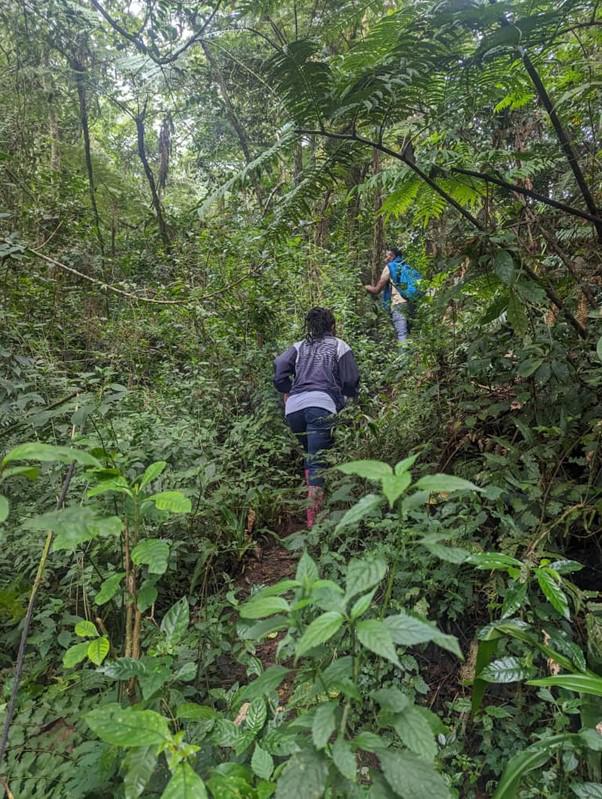Monica Tembah Shilereyo
Small mammals (particularly those belonging to the orders Rodentia and Eulipotyphla) are the most successful group of mammals. They play important roles in the ecosystems where they occur, including contributing to biological diversity, providing food to other organisms, and enhancing ecosystem stability. Specifically, Shrews occur throughout the world, and more than 40% of the extant species (145 of 325) are indigenous to Africa. The genus Myosorex in particular comprises 15 extant species that exist in the forested highlands of central, eastern, and southern Africa, Uluguru Mountains Forest included.

Montane forest site. ©Emmanuel Jonas, 2024.
Uluguru Mountains Forest is one of the global centers of biological diversity, recognized at international and national levels as a priority for nature conservation. As part of East Arc Mountain's hot sport, it is home to a number of endemism for both plant and animal species, including the Geata Mouse Shrew. Specifically, the Geata Mouse Shrew (Myosorex geata) is endemic to the Uluguru Mountains, and it has been reported to occur on the upper part of the Uluguru Forest Reserve at 1500–2000 m asl. Furthermore, according to the IUCN’s Red List, the species is endangered due to several factors, including habitat deterioration as a result of anthropogenic activities. Since its distribution might extend beyond its current range and, in fact, beyond the protected areas, it is important to assess its current status and develop an action plan for its conservation in any potential new sites.
Due to the fact that M. geata takes refuge in ground litter, its population is sensitive to disturbances. However, since human activities occur mainly at and are thus more intense at lower elevations in the reserve, the populations of M. geata that occur at higher elevations may probably be less threatened by human activities than the populations living at lower elevations. Consequently, it is imperative to urgently establish the abundance and distribution of the species along the elevational gradient. Thus, this study is also going to improve our current understanding of M. geata population size, distribution across elevational gradients (currently missing according to IUCN, Kennerley, 2016), and habitat types (e.g., favorable temperature, elevation, humidity, canopy cover, understory cover, distance from the ground, and distance from the forest edge) and how changes in each variable will likely affect the species. Furthermore, to assess the community’s awareness of the importance of conserving M. geata and other biodiversity in the Uluguru Mountains Reserve for sustainable livelihoods, the study will use questionnaire surveys and Key Informant Interviews. Among the conservation outputs of the project is the development of the management report, manuscripts publication and the stakeholders (key players in the conservation- communities and the village leaders) workshops for disemination of the findings.